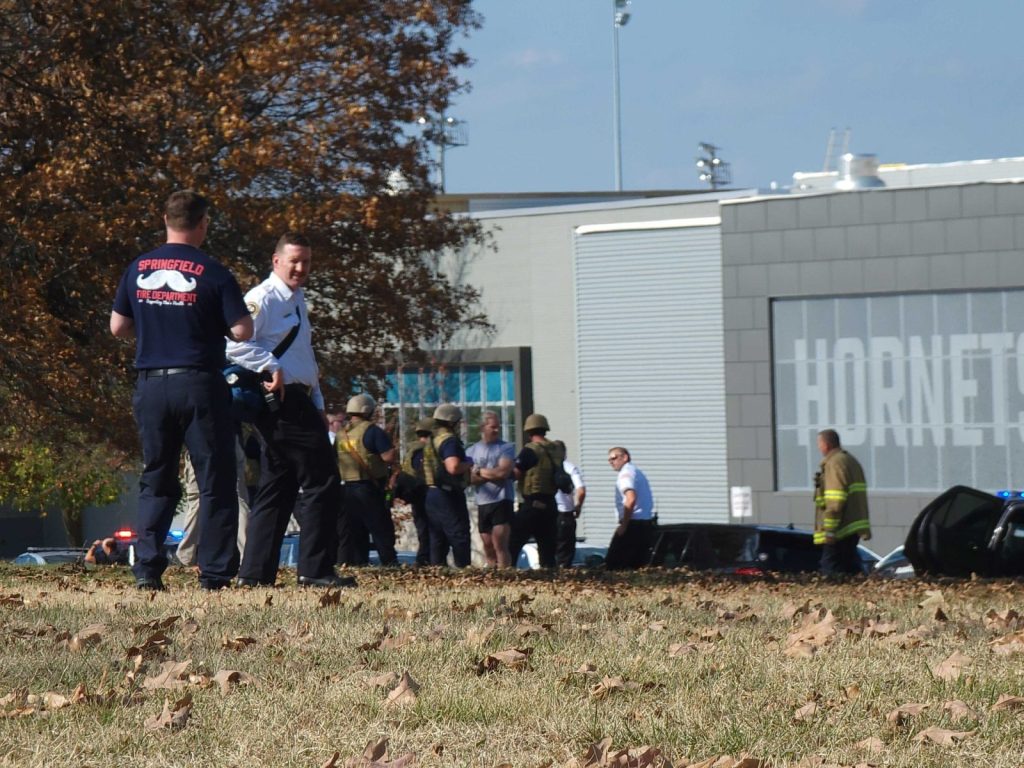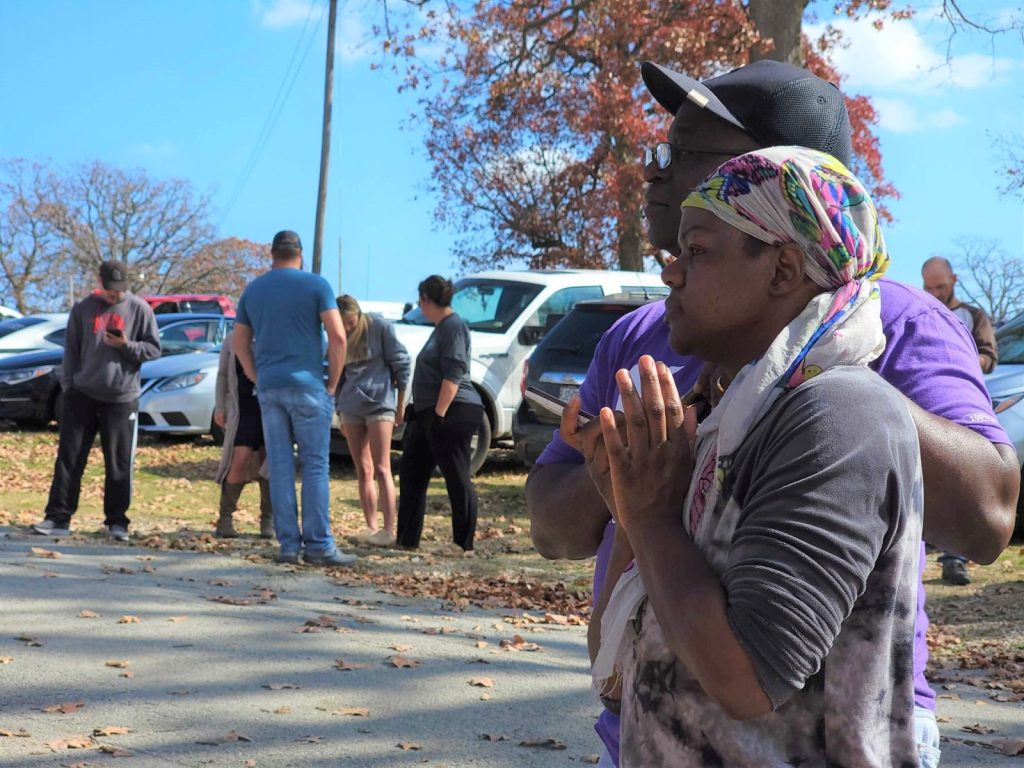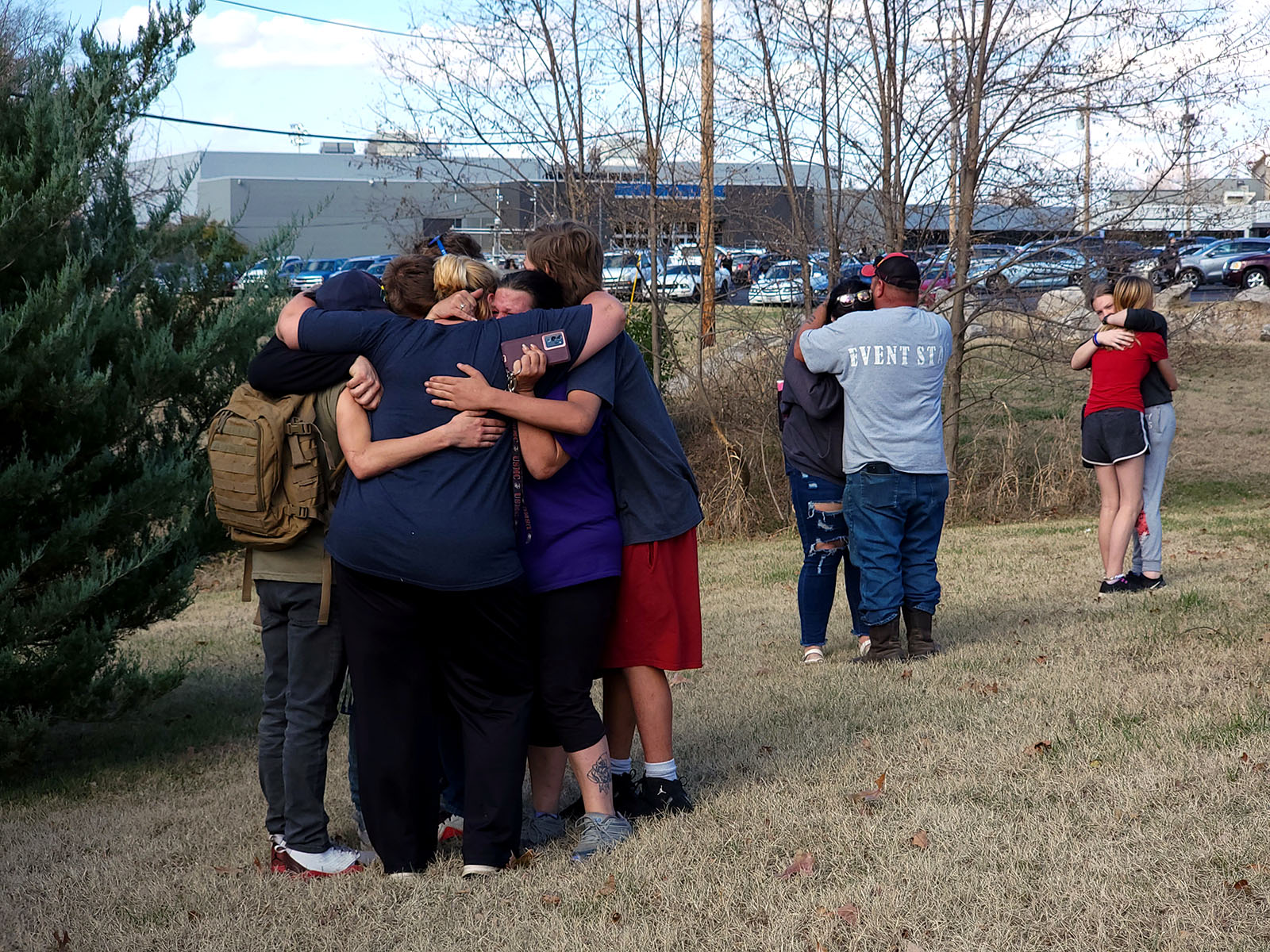On the day Hillcrest High School parents raced to the campus in response to what was initially reported as a shooting in the building, Jennifer Shotwell kept updated on what was going on inside her son’s school thanks to a police scanner app on her phone.
But she said she started to rely on reports being broadcast by emergency responders well after the initial burst of information about a shooter in the building, which turned out to be based on a false report from a 911 caller. For some who gathered outside the school, Shotwell said, the initial report relayed over the scanner lingered, even after she and other parents heard directly from Springfield’s police chief that it was a false alarm.
“I spent a lot of my time out there meeting with the parents and calming those fears and trying to quell that,” Chief Paul Williams said. “And the number one thing I got was, ‘Well, I heard it on the scanner.’ And my immediate response was, that's not true. Scanner traffic is that — it’s unconfirmed information 99 percent of the time.”
But when a call comes into 911, and the information is relayed over the scanner, Williams said police and emergency workers respond to it as though it is 100 percent accurate.
Scanner information evolves from the first report through the duration of the response

The first Springfield police officer arrived at Hillcrest at 11:59 a.m. on Nov. 3, two minutes after dispatchers relayed information over the scanner about a 911 caller who said a shooter had fired upon multiple victims inside the high school. Soon after, reports at the scene began to counter information received by the 911 caller.
Local emergency scanner communications are publicly accessible, whether by radio or online platform. Springfield Police spokeswoman Cris Swaters said people tuning in to an emergency like the Hillcrest incident should know information evolves during a response.
“As the police department, we respond to every 911 call assuming there’s factual information until there is evidence otherwise,” she said. “We treat every 911 call as if it is the real thing.”
And then, she and Williams said, police investigate whether the report was true or not.
“Until we confirm it, until you hear from us, from the police department, you can’t take anything you hear on the scanner as gospel, and please don’t,” Williams said.
Reports over the scanner can inform bystanders in emergency situations, but also inflame rumors

Officers on the scene didn’t locate shooting victims, a weapon, shell casings or a suspect. In less than an hour after the initial response, Hillcrest families received an email informing them both of the initial 911 report, and of early indications that it was a false alarm. At about 1:45 p.m., another email went out letting parents know how they would be reunited with their kids.
But early scanner reports spread rapidly over social media. Several posts on the private Facebook group “417 Scanner Chatter - Greene County’s Finest!” referenced the initial report of the active shooting. The group, which routinely features posts from members in search of more information about an emergency incident developing in the Springfield area, has nearly 17,000 members.
In a Facebook Live video that was posted on the group site by someone who was standing near the fence of the football field, people can be heard questioning whether the event was a false alarm well after students had been led out of the school, citing the initial scanner traffic.
Williams said reposting scanner traffic on social media can lead others to take what they read as the truth.
“It's just information that's received from a caller,” he said. “Sometimes it's legitimate. Sometimes it's not. Sometimes it's anonymous. Sometimes it's someone that we can go talk to. But everything coming across there is unconfirmed until we get there and address it and figure it out. So I always tell people: ‘Take whatever you hear — if you're listening to that — take it with a grain of salt and wait for official confirmation before you repeat, respond, repost.’”
Parent sees value in more information

In a Twitter post, Shotwell recommended other parents have a scanner app downloaded in the event they have to go through a similar ordeal, whether it turns out to be a false alarm or not. But she also stressed that parents and kids use social media to post not only the terror-inducing initial report in a false alarm situation, but also updates that “can calm the flames instead of fanning them”
Shotwell said she first tuned in when her college-age son called her after driving by Hillcrest and told her police had swarmed the school another of her three children attends. Shotwell said she tuned into the scanner broadcast as officers radioed to report they were searching outside the school to see if a suspect had fled the campus. By that time, she said, it sounded like they were ruling out unlikely options.
She said she’d downloaded the app to keep tabs on weather emergencies in the event of a power outage. With the Hillcrest incident, she said, it helped pace her through a challenging afternoon. She first heard over the scanner that parents would eventually be reunited with students at a nearby fairgrounds gate, so that’s where she headed. There, she listened over the scanner as officers reported clearing classrooms and the cafeteria, which is where her son was located.
She said her son told her he was getting texts from friends in all corners of the school with very different variations of what had caused the emergency response. Rumors of shots fired were rampant, she said.
“The gas pumps at the Eagle Stop had blown up — that’s one that he heard,” she said.
But keeping tabs of the entire response over the scanner countered rumors she said were swirling both in the parking lot and in the school.
“Once you get to that stage of it, that is when the scanner information is helpful,” she said.
She said she only paused the app when Williams visited with her and others in the fairgrounds parking lot to relay that police hadn’t found any evidence of truth to the initial 911 call that sent hundreds racing to Hillcrest.
Jackie Rehwald contributed to this report.

